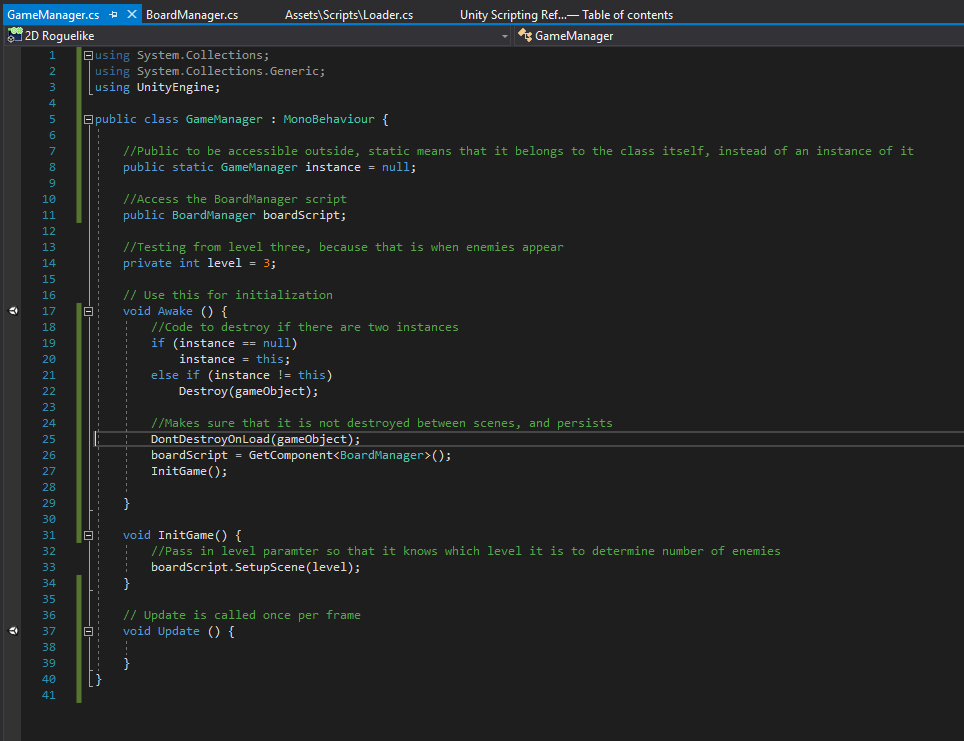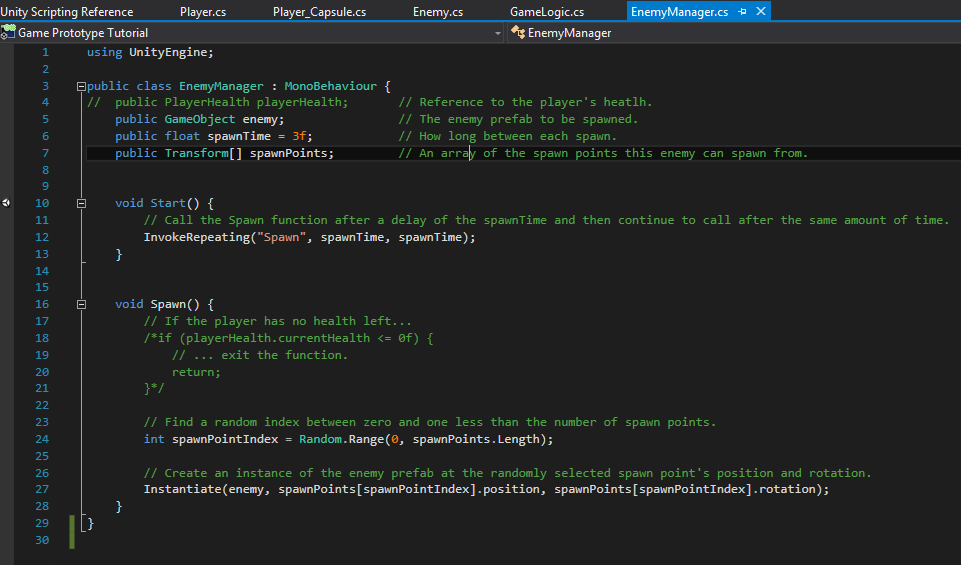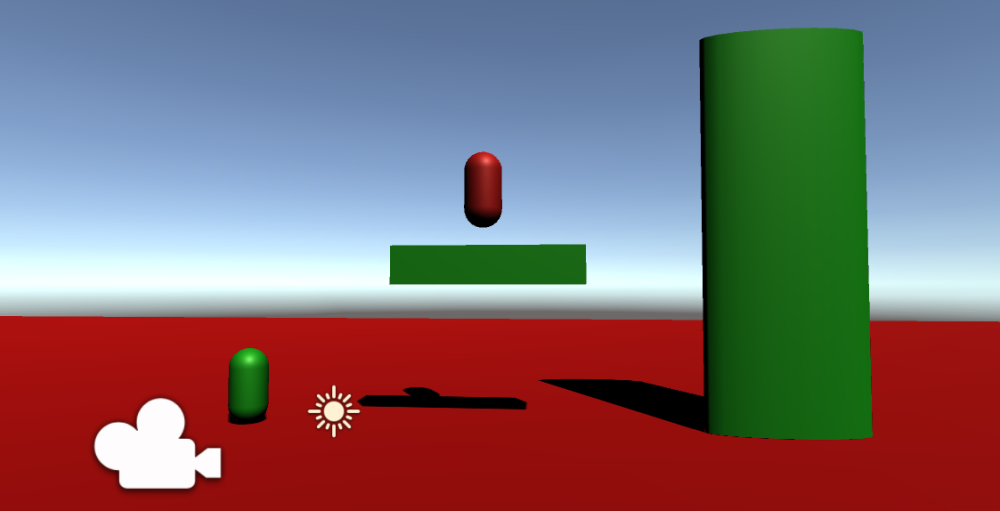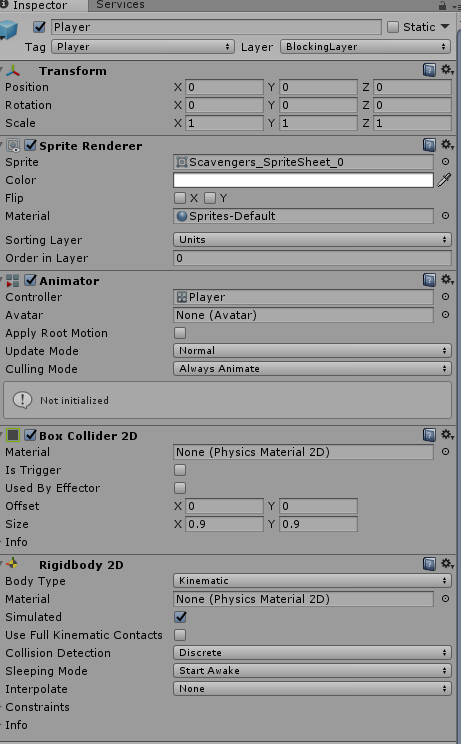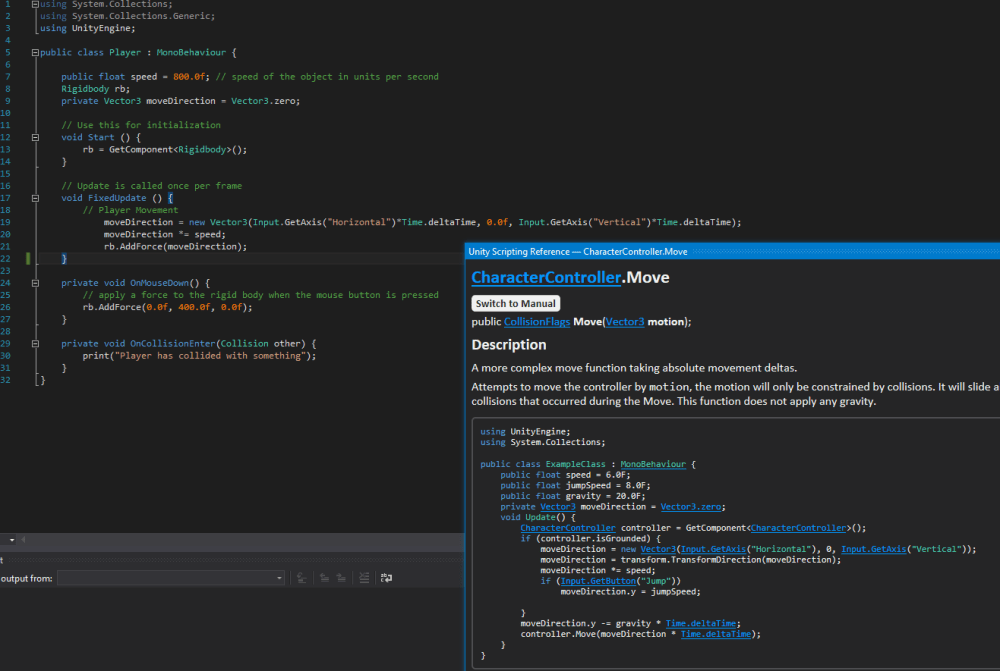This is the first post for my Game Prototyping module (DES304). I have admittedly slacked off and now only have two months until the project deadline. The aim is to have documentation and a working prototype for a game in Unity. To achieve this I will be aiming to do tutorials and an associated blog article every Friday until 2 weeks before submission. Thankfully, I have had experience with programming and have done some small prototypes in Unity as well as some scripting, so hopefully coming to grips with Unity 5.x and creating stuff in it won’t be too difficult. However, it must be mentioned that my last prototype was done almost 2 years ago and I have also had no programming practice since then. This, combined with the limited time frame, along with other courseworks, a job and personal projects/jams/competitions means that I will have to work double time.
On to the prototype itself. In the first week we got taught the basics of the Unity editor as well as some simple scripting to move a cube around. What I liked about it that it showed an alternate clever way to implement recognizing inputs that lets Unity handle figuring out what kind of input device it is. If this really works as efficiently as it seems, it really is a clever way of coding your game to be (as close as it can be to) input device independent. For now, all the cube does is move left and right according to user input. I do like that it was immediately pointed out to use Delta Time in order to make actions framerate independent. This gives me a lot of faith in the tutor and the course, especially considering that some games made in 2017 still haven’t figured this out… (Hell, even the Dark Souls/Demon’s Souls games suffered from this).
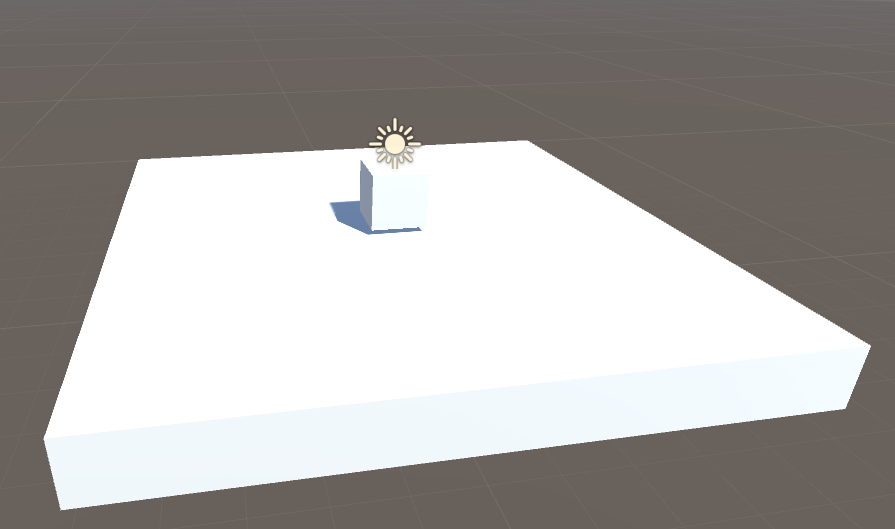
Week 1 tutorial – moving a cube left and right using a Vector3 and Input device- independent controls. Not a bad start.
In terms of ideas for what my game will be… Hmm… I did always want to expand on an idea for a Vlambeer-inspired space invaders action game. However, that is 2D and while it is very focused on delivering a satisfying experience I am somewhat afraid that it will be slammed for being iterative, as the description notes that games should ideally do something “different”. I have a feeling that some weird hipster janky mess of a game would still score higher based on creativity alone. There is still a high likelihood of me sticking to my idea and simply thinking of how to expand it in creative ways… Especially since I love the concept of game feel and making something very satisfying and tactile to play.
Alternate game ideas that I’ve had include making a 2.5D combat platformer with waves of enemies coming in and a very simple rock-paper-scissors combat style mechanic using shields, swords etc.
My other idea is to simply make a mobile game where you are the god of wind and you need to maneuver a little woodland spirit by blowing gusts of wind with your fingers and going through different paths with obstacles.
Which one I stick with in the end will entirely depend on which one inspires me to work the most and also how much time I have. because some of these a re far more feasible than others, given my limited artistic proficiency and all my other side projects.
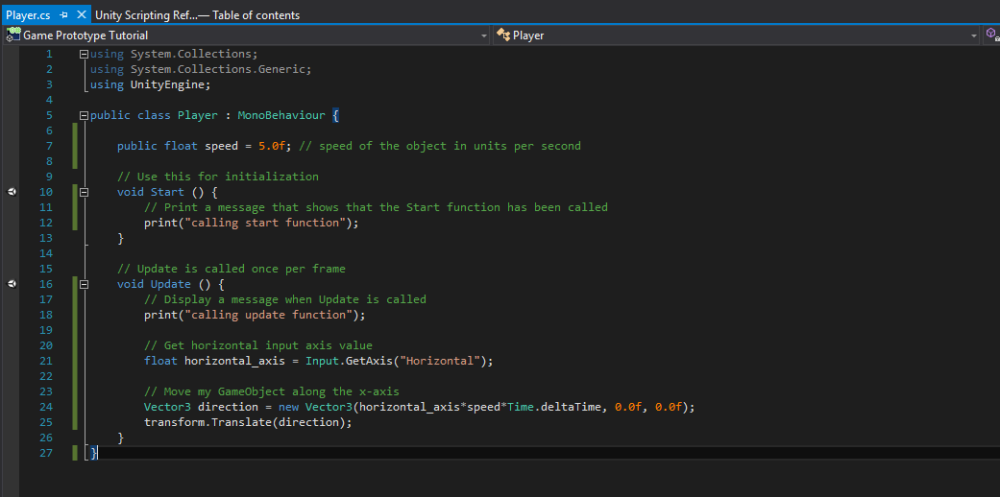
My VS2015 setup – sleek, dark and efficient
The good thing is that I have updated my setup so I have the latest Unity version, two monitors working (for optimal tutorial viewing) and have setup VS2015 (I don’t fancy MonoDevelop as much) with the uIntellisense plugin, which gives me the full scripting reference built-in.




